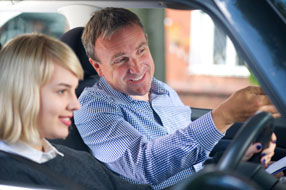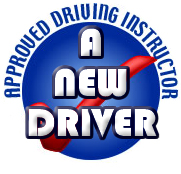
What should I do the morning of my driving test?
DRIVING LESSON POINTERS
Get in gear: your very first time in the driving seat
You’ve been studying, and now it’s time to put what you have actually learnt into practice behind the wheel. Booking your first driving lesson is exciting, however it might not take too wish for the nerves to sneak in. Let’s have a look at a couple of things you can do to assist keep you calm, cool and gathered as you discover how to drive.
How to get ready for your very first driving lesson
Review the Highway Code – not just will it assist you when it comes to taking your theory test, it’ll keep the guidelines and policies of the road fresh in your mind.
Choose an useful clothing. Attempt to wear something comfortable that you can move around in and prevent any restrictive clothes and footwear. Flip flops and high heels, in particular, aren’t perfect when driving.
Remember your provisional licence – your instructor will examine that you have it. You can’t lawfully lag the wheel without one so it’s an outright should for your very first driving lesson. You may also be requested for your check code, so your trainer can inspect your online licence counterpart.
Ensure you’re fit to drive. Avoid consuming the night before and keep in mind to bring your glasses or contact lenses if you require them.
Pass your test with us
Driving SchoolDriving Test Ireland
What do you do on your first driving lesson?
Will I drive straight away?
Don’t fret – you won’t get in the driving seat straight away. Your trainer will drive you to a peaceful roadway where you’ll find out all the principles of the automobile controls. This includes the gears, the pedals, and what’s referred to as the cockpit drill.
What’s a cockpit drill?
This is an exercise that all motorists need to perform when they get in the automobile, and it’s usually one of the first things you’re taught. The cockpit drill (frequently referred to as the DSSSM regimen) includes examining your doors, seat, steering, seat belt and mirrors:
- Doors– inspect all doors are closed and protected before starting your engine.
- Seat and steering– change your seating so that the controls are within simple reach and you have a clear view of the roadway. If you’re in an accident, you ought to also adjust your headrest to prevent whiplash.
- Seat belt– make certain you and your passengers are buckled in.
- Mirrors– position your mirrors to minimise your blind spots.
How do I move off?
When it concerns the huge moment– taking control of the cars and truck– you’ll have to move the vehicle off and show that you can securely do the ‘Prepare, Observe, Move’ regular:
Prepare – getting the vehicle prepared to retreat when the roadway is clear
- Press and hold the clutch down with your left foot.
- Select initially gear.
- Press the gas pedal down with your best foot up until you’re at about 1500-2000 rpm.
- Bring the clutch up gradually till you find the biting point.
- Be ready to release the handbrake at the correct time.
Observe– revealing your instructor that you’re aware of your surroundings
- Check all around the cars and truck looking for anything that might affect your driving strategy.
- Look over both shoulders.
Move– confidently moving the automobile off when you’re safe to go
- Release the handbrake.
- Release the clutch gradually while carefully putting your foot down on the gas pedal.
- Alleviate up on the gas and control the speed of the lorry using the clutch pedal if you discover you begin to move off too quick.
- Re-check your mirrors and blind spots and move your cars and truck to the regular driving position.
What if I make a mistake?
It’s regular to be worried when you’re learning to drive – and you’re not expected to master whatever quickly. Driving is something you get better at with time and practice. Even motorists who have actually been on the roadway for several years are still improving. So don’t worry about making a mistake – your trainer’s seen it all previously.
In the (unlikely) case of something going wrong, felt confident that your trainer can control the cars and truck. All professional driving schools use double controlled cars and trucks, which suggests your trainer can step in if you require some aid.
Scheduling your very first driving lesson is amazing, but it may not take too long for the nerves to sneak in. You can’t lawfully be behind the wheel without one so it’s an absolute should for your first driving lesson. Your trainer will drive you to a peaceful roadway where you’ll discover all the principles of the automobile controls. It’s normal to be anxious when you’re learning to drive – and you’re not expected to master everything directly away. Driving is something you get much better at with time and practice.
Related Articles
[page-generator-pro-related-links group_id=”1597″ post_status=”publish” output_type=”list_links” limit=”6″ columns=”2″ link_featured_image=”0″ orderby=”rand” order=”asc”]
Learn More
